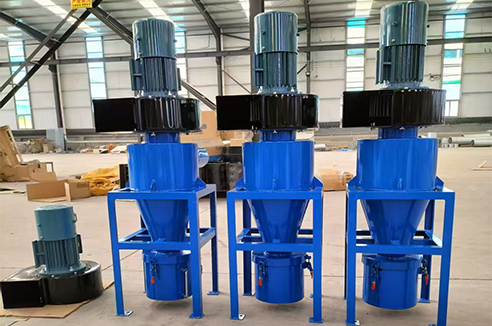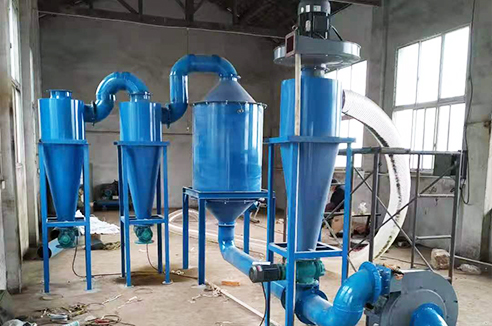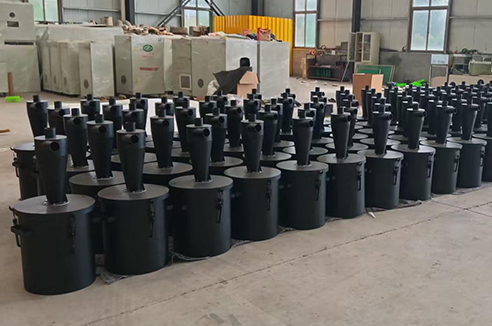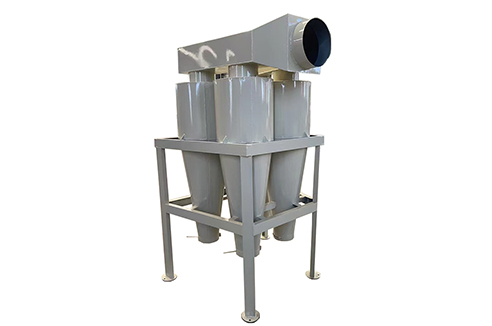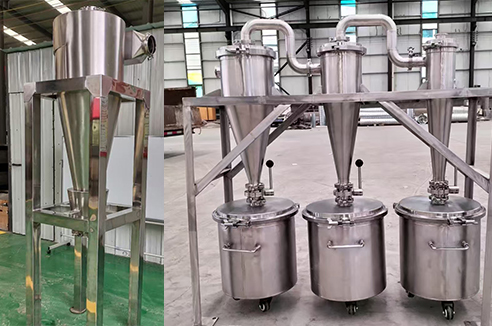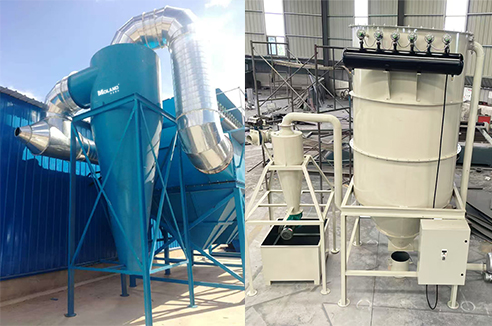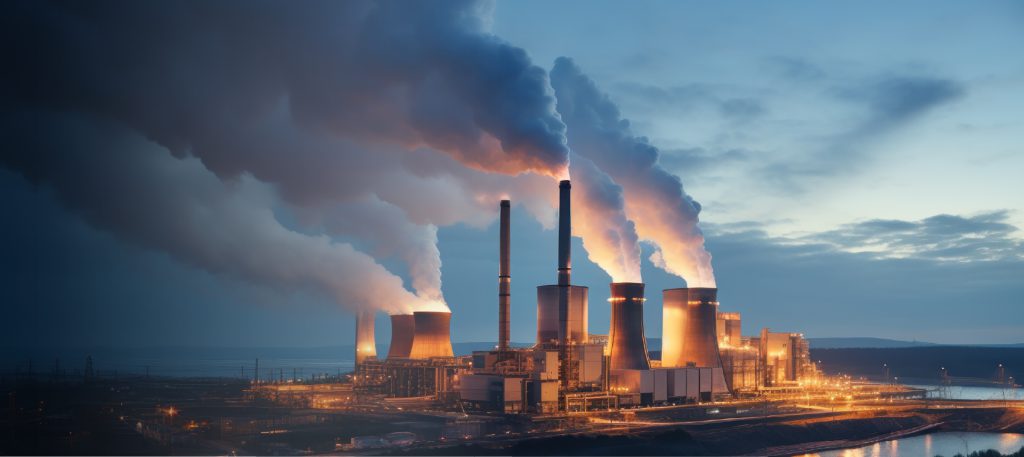The Cyclone dust collector is designed specifically for high dust load, high temperature, and product recovery applications. It has a mechanical separator that uses centrifugal force to remove dust particulates from the air in industrial applications. Dusty air enters the cyclone and the dust particles travel around the inner wall of the cyclone. As the particles lose their velocity, they drop lower in the cyclone until they drop into the receptical below.
A cyclone separator is essentially a bucket with a fancy lid. When connected to a vacuum source, the lid creates a cyclonic suction that collects large dust particles minimally, and the small dust particles at best. By adding one of these to a standard shop vac or dust extractor, you can collect much of the dust before it ever reaches your industrial cartridge filter dust collector.

| Nominal Airflow Range (m3/h) | Inlet Velocity (m/min) |
| 510 - 917 | 1091.2 - 1889.8 |
| 1,461 - 2,038 | 1335.0 - 1869.9 |
| 2,123 - 3,397 | 1083.6 - 1740.4 |
| 2,548 - 4,247 | 1307.6 - 2176.3 |
| 3,312 - 5,945 | 1091.2 - 1966.0 |
| 5,096 - 7,644 | 1164.3 -1746.5 |
| 6,795 - 9,512 | 1554.5 - 2176.3 |
| 7,304 - 11,891 | 1223.8 - 1993.4 |
| 7,644 - 12,740 | 1283.2 - 2136.6 |
| 8,493 - 13,589 | 1423.4 - 2275.3 |
| 13,589 - 19,534 | 1380.7 - 1984.2 |
| 13,589 - 22,082 | 1380.7 - 2243.3 |
| ... | ... |
Working Principle
The working principle of a cyclone dust collector is to use the centrifugalforce generated by the rotation of the airflow to separate dust from the dusty airflow. The dusty airflow enters the dust collector along the tangential direction from the air inlet, and then rotates downwards along the outer wall. This downward rotating airlow is called an external vortex. After reaching the bottom of the cone, the outer vortex rotates upwards along the axis and is discharged from the discharge pipe (air outlet). This upward airflow forms an internal vortex. The direction of rotation of the downward outer vortex and the upward inner vortex is the same, that is, when they rotate in a clockwise or counterclockwise direction, the dust is thrown towards the outer wall under the action of centrifugal force. The dust that reaches the outer wall falls into the dust hopper along the wall under the combined action of the downward airflow and gravity.
